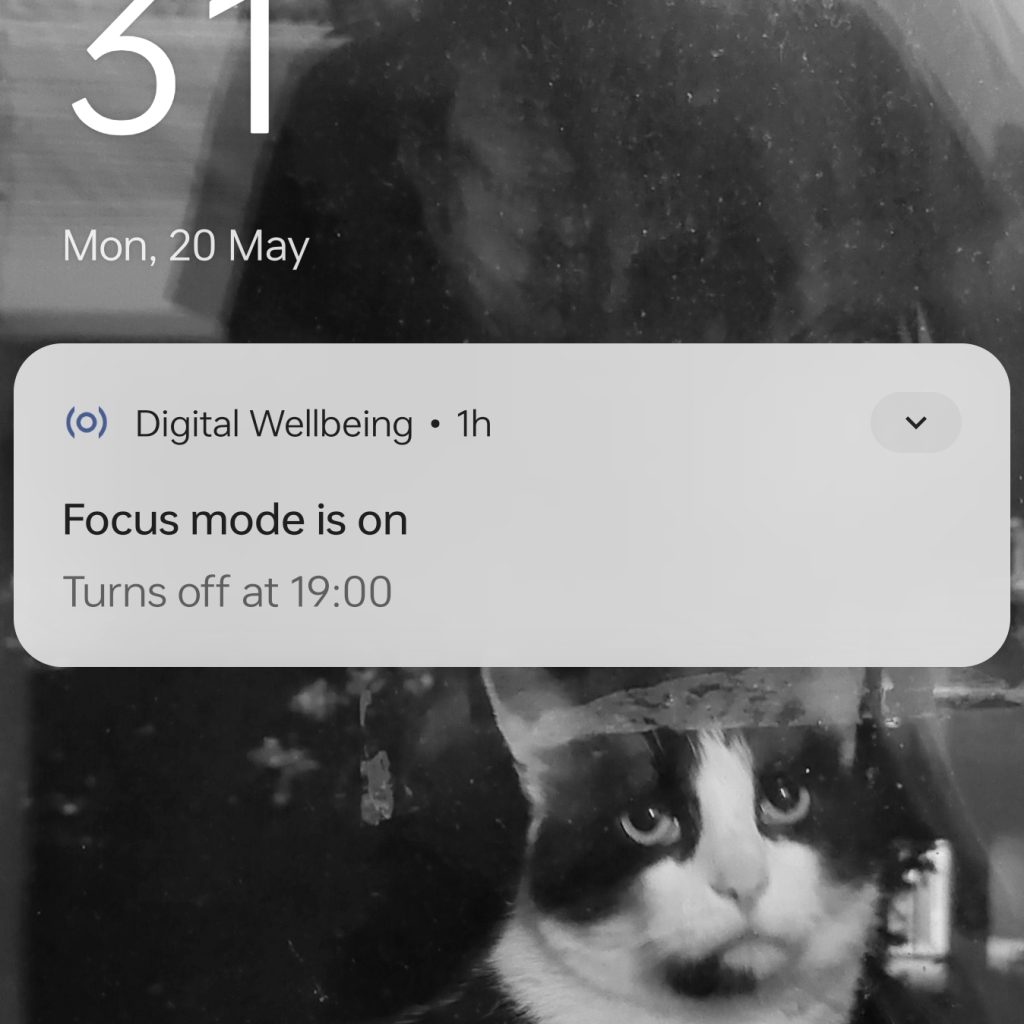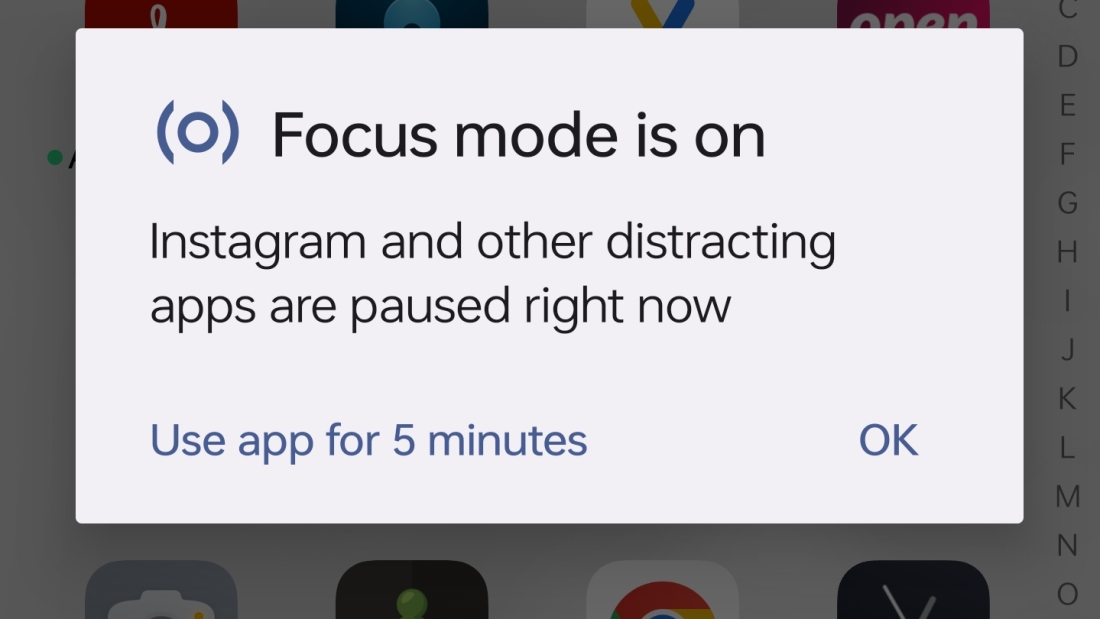I have screen-time troubles. Many people I know do too. The 30-second reels and shorts that add up to hours every day. Refreshing your email inbox every time you unlock your phone. Mindlessly browsing dating apps or eCommerce sites. Binge watching shows. Our insatiable appetite for dopamine is a problem. I have also noted that excessive phone use drains me, acts as a gateway to smoking, and generally leaves me too unmotivated to read or write.
This post, therefore, is where I document a few solutions that I am playing with to fix the problem, and how they have worked for me.
Focus Mode
I recently discovered that my Oppo smartphone has a feature called the Focus Mode. In this mode, your phone restricts you from opening certain apps so you can focus and get work done. You not only do not get notifications but are nudged to reconsider opening the app. You can use an app for five minutes before the pop-up informs you that you need to get back to work.
The beauty is that it is not as extreme as deleting the apps from your phone, as you can still access them when needed. Think of it as storing a cookie jar at the back of the top shelf of your kitchen cupboard: you can reach it if absolutely necessary, but generally you wouldn’t bother to jump through all the hoops to get there.
You pick the apps that you find distracting – like Instagram, Facebook, or in my case, Google Maps – and ask Focus Mode to restrict your access, effectively acting as a bouncer stopping you from entering a nightclub. You also set the timing for when your phone goes into this mode, like 9 AM to 5 PM on weekdays, for instance.
This is something I have been using for nearly a year now. The good thing is that now, even on weekends, I am not as tempted to check the apps during the day. However, what’s bad is that because of this restriction, I sometimes double down on usage as soon as Focus Mode turns off.

Intermittent digital fasting (a.k.a. Time-based usage)
Intermittent fasting is central to my life. Since the mechanics involved rely on time-based consumption or usage – you fast for 16 hours and consume for eight – I feel the same principle could be used for digital wellbeing.
The problem I ran into was running two IF cycles simultaneously. I eat between 1 PM and 9 PM every day. Should I use the same time for my digital consumption? This would be simpler to manage and will prevent phone use closer to bedtime, except that I would be distracted during the workday. The other option is to have them running independently, possibly with a slight overlap – 1 to 9 for food, 4 to 12 for screens – thereby letting me work in peace till the evening.
Since I have been using Focus Mode, I have stacked the two solutions. In the strictest terms, I should start using my phone only at 7 PM (when my Focus Mode stops) and stop by 9 (when my IF cycle starts). Unfortunately, this ideal solution is very tough to achieve. I do it imperfectly by extending this window to 11 PM or midnight.
Space-based usage
The final experiment is only using screens in a specific area of your house. For instance, I used to browse the apps only when I was seated in a specific corner of my room. At other times, if I am at my workstation or the dining table, I wouldn’t touch my phone. This worked for a while before I got into using Focus Mode. With limited time on my hand, I couldn’t be bothered just using my phone while on the armchair. Plus, if you’re on holiday or working from different locations (like a digital nomad moving from one hostel to the next), this becomes harder to plan.
Digital distractions are not going away anytime soon, and I, for one, need more sustainable habits that I won’t fall out of.
I’ll be back with more documentation of personal failures and struggles, and possible self help solutions in another episode of Unsolicited Rick Picks. Stay unhooked!
